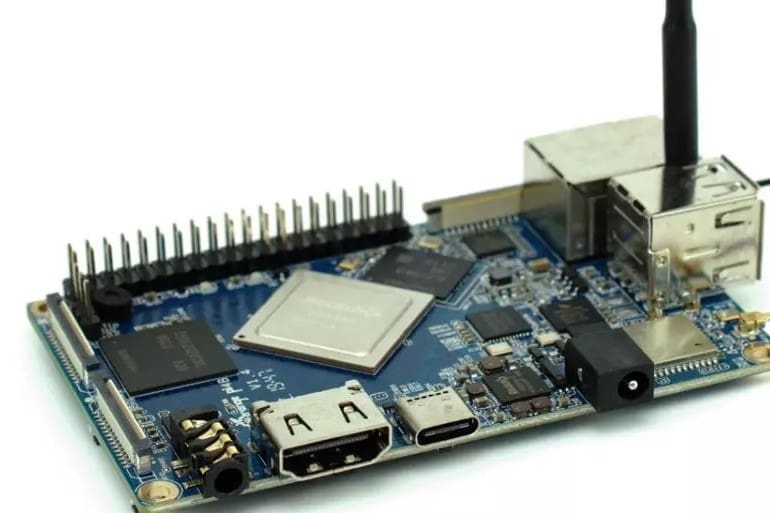Apples to Oranges
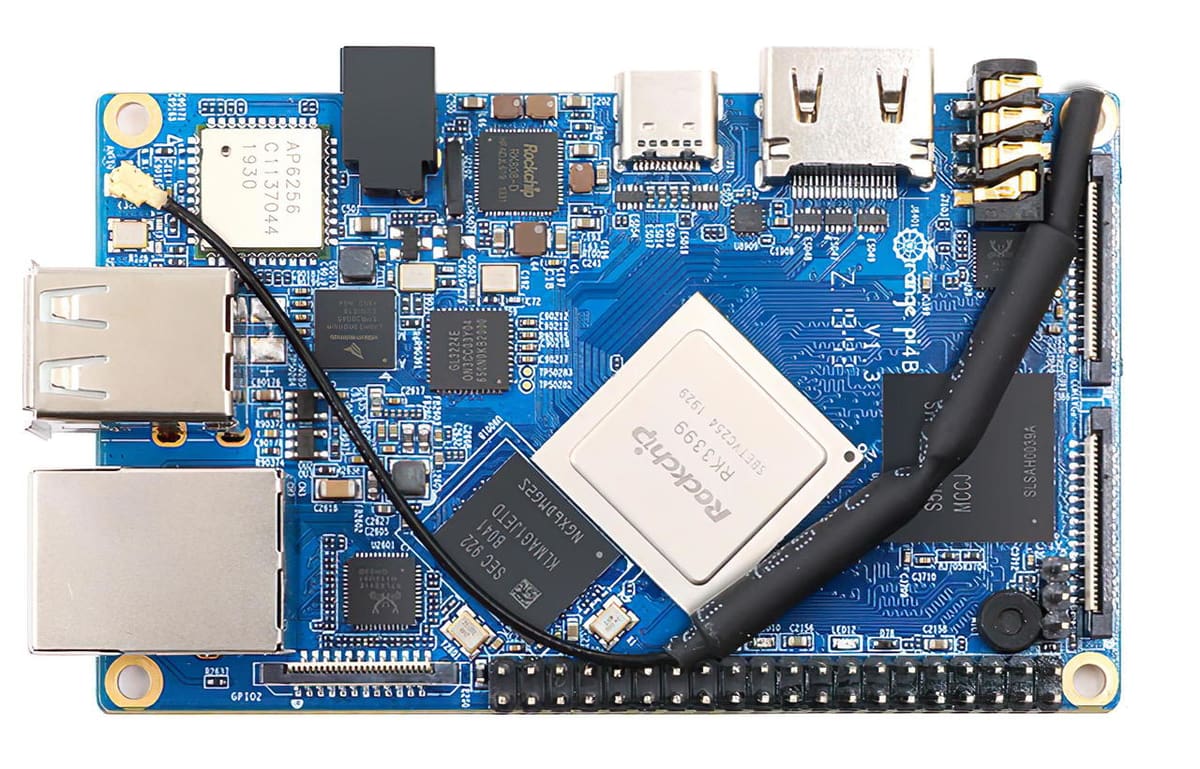
A single-board computer (SBC) is a computer that contains all of its hardware on a single circuit board. All you need to get the computer up and running is a power supply and, usually, a memory card.
The Orange Pi 4B is an SBC with similar specifications to many others on the market. However, it also has an extra feature that makes it unique among it’s more traditionally-configured peers: a hardware neural network.
Types of SBCs
There are two types of “consumer” SBCs. One is a microcontroller-based SBC, such as the Arduino and its alternatives. These are typically small and low-powered devices that have limited inputs and outputs. These devices excel at performing specific tasks that do not require too much processing. The Arduino and its clones, for example, are popular for use in controlling home-built 3D printers.
These devices aren’t suitable for general processing tasks, such as those performed by a PC, due to their limited processing and visual output capabilities. They also require software written specifically for the task they are to perform, as they normally don’t run an operating system.
The other type is a “general-purpose” SBC. These devices have much greater processing capabilities and typically have a good selection of inputs and outputs, like USB, HDMI, Ethernet, Wi-Fi, Bluetooth, and others. These devices normally run an operating system, very much like a PC or laptop.
Features

The standout feature of the Orange Pi 4B is its hardware neural network, which is by no means a standard feature of an SBC. However, this extra cleverness comes at a cost: there are fewer USB ports and other connections than some of its competitors.
Hardware Neural Network
The most basic description of a neural network is a software package or hardware chip that computes data in a similar way to a brain. Neural networks have tens to tens of millions of artificial neurons, while the human brain has tens of billions of neurons that communicate with other neurons to process information. In a similar way to how a real brain strengthens specific synapses between neurons to learn, a neural network learns by adjusting weightings for signals between artificial neurons.
The neural network in the Orange Pi 4B has approximately 28 thousand neurons, which allows it to perform moderately advanced processing tasks much more efficiently than a software-simulated neural network on a normal CPU could. This capability makes the Orange Pi 4B an attractive proposition for those wanting to experiment with applications that would benefit from an embedded neural network.
A neural network can be used for many processing tasks, but excels particularly in classification and pattern identification, data filtering and categorization, and approximation and data analysis. In particular, neural networks are very good at identifying and categorizing objects in images and videos. A well-trained neural network can perform these tasks much quicker and more accurately than software written to perform these tasks on a traditional CPU.
Inputs & Outputs
On the downside, the Orange Pi 4B has a relatively limited set of inputs and outputs. It has only two USB-A 2.0 ports and one USB-C 3.0 port, which also doubles as a power input. Another couple of USB 3.0 ports would be very handy, as a USB hub would be required for all but the most basic applications with the current configurations.
Interestingly, the OrangePi 4B provides two camera serial interface (CSI) ports and two display serial interface (DSI) ports (one port each with one port shared between CSI and DSI). This means the Orange Pi 4B supports either two direct camera inputs, or two direct display outputs. Two direct camera inputs could be an advantage in computer vision applications that make use of the built-in neural network processor.
The Orange Pi 4B also provides a Raspberry Pi-compatible 40-pin GPIO header, a PCIE ribbon connector, a 3.5-mm audio connector, and, unusually, an onboard microphone.
The Bottom Line
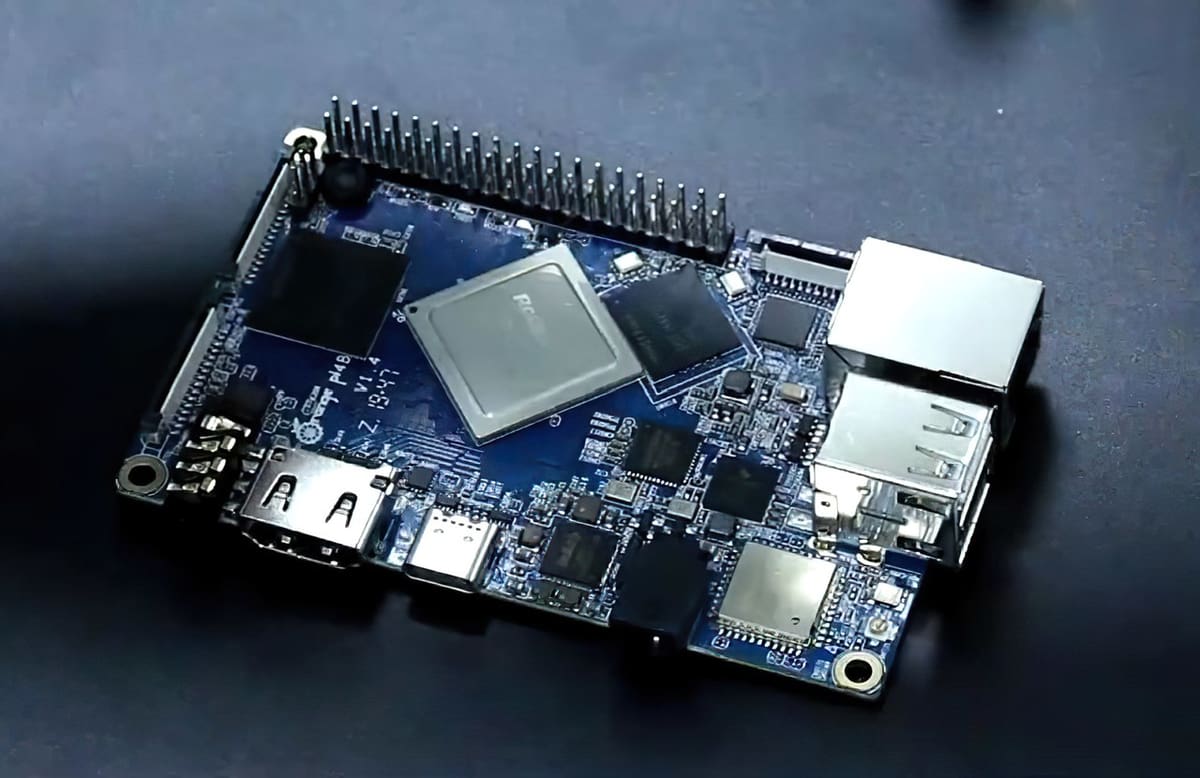
The Orange Pi 4B compares well with other similar SBCs when considering general processing and graphics processing performance. One of the advantages of the Orange Pi 4B is the inclusion of 16 GB of onboard flash memory for storage. This removes the need to run the operating system and software from an external SD card or USB flash drive.
Where the Orange Pi 4B is in a league of its own, however, is the inclusion of the neural network chip. The inclusion of this chip opens up numerous unique usage cases that no other SBC currently on the market is capable of.
Who & What Is It For?
The Orange Pi 4B is more expensive than most similar SBCs, which makes it less attractive for typical SBC tasks. However, the inclusion of the neural network chip means it’s well suited to specialized neural network research and development, image categorization, object detection, data filtering, and many other tasks that benefit from a neural network.
Furthermore, being an SBC with relatively low power demands and with the inclusion of multiple direct camera inputs and display outputs, the Orange Pi 4B could form the basis of an AI-powered single or binocular camera system. You could task it for object detection, distance estimation, a security system with facial and object recognition, and other such uses.
In short, if you’re looking for a small, portable and well performing neural network for your research and experimentation projects, the Orange Pi 4B is probably for you.
Technical Specifications
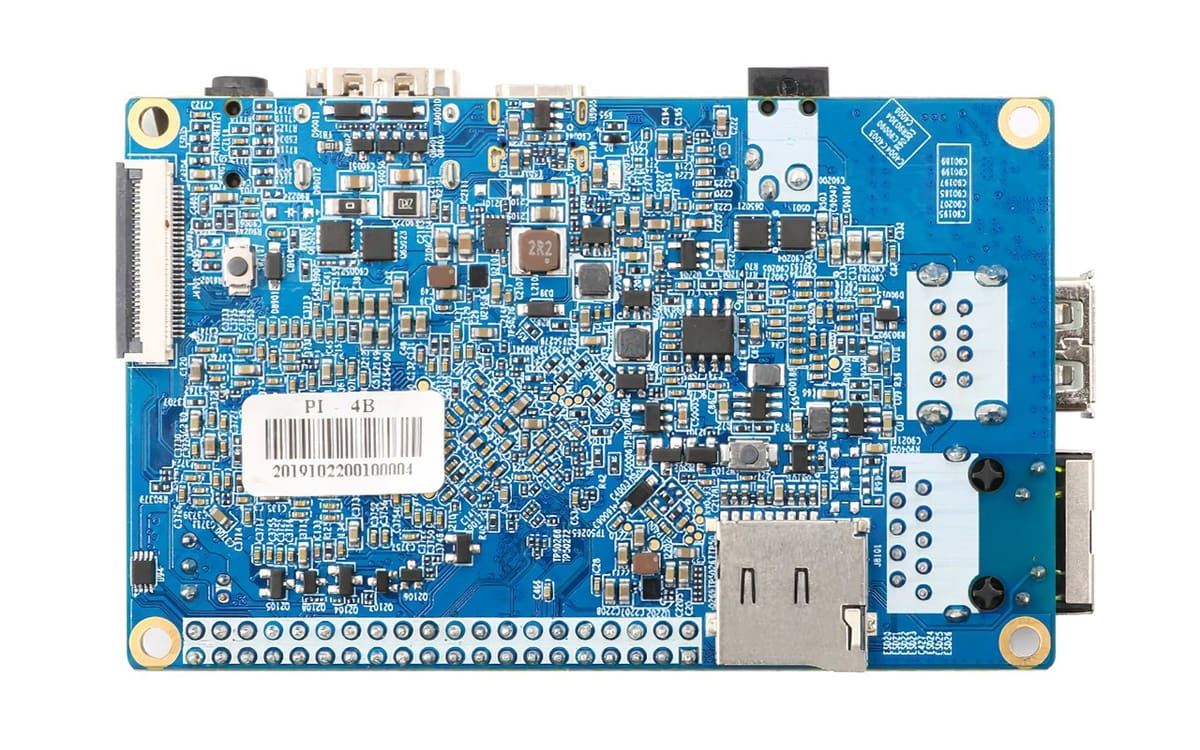
The following are the Orange Pi 4B’s main specifications:
- CPU: Rockchip RK3399 (6-core ARM 64-bit processor up to 2.0 GHz, Dual-core Cortex-A72 & Quad-core Cortex-A53)
- GPU: Mali-T864 GPU
- Neural net processor: Lightspeeur SPR2801S
- Memory: Dual 4 GB LPDDR4
- Onboard storage: 16 GB EMMC flash
- Wireless comms: Wi-Fi 802.11 a/b/g/n/ac, Bluetooth 5.0 (SparkLAN AP6256)
- Network: 10/100/1000 Mbps Ethernet (Realtek RTL8211E)
- Audio: 3.5 mm jack (in/out), HDMI 2.0a output & onboard microphone input
- Video: HDMI 2.0 (type A), DisplayPort 1.2 with support for 4K at 60fps; Dual MIPI-DSI
- Camera: 2 x MIPI CSI inputs
- USB: 2 x USB 2.0, 1 x USB 3.0 type C
- Other inputs/outputs: Supports RTC, 3 pins Debug UART, 40 pins GPIO1 (I2S, 2 x I2C, SPI/UART, 8 x GPIO), 24 pins GPIO2 (PCIE port)
- Power source: DC 5 V, 3 A; Type C 5 V, 3 A
- Dimensions: 91 x 56 mm
Where to Buy
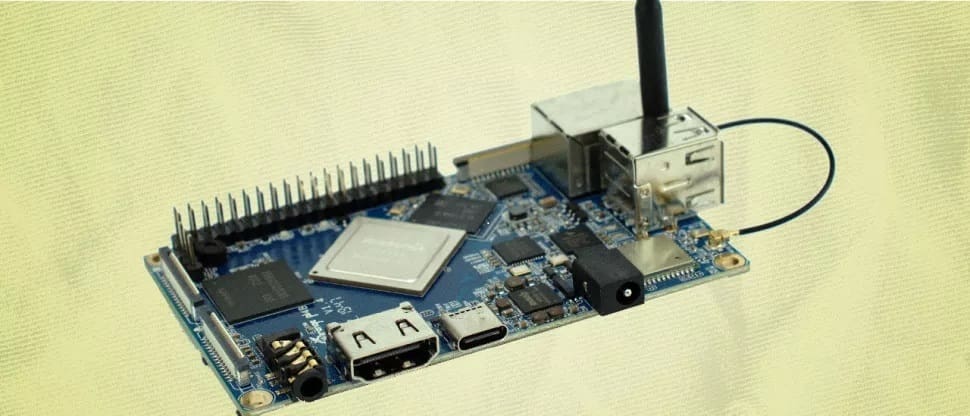
Convinced? The Orange Pi 4B is available through the following vendors:
License: The text of "Orange Pi 4B: Review the Specs" by All3DP is licensed under a Creative Commons Attribution 4.0 International License.
CERTAIN CONTENT THAT APPEARS ON THIS SITE COMES FROM AMAZON. THIS CONTENT IS PROVIDED ‘AS IS’ AND IS SUBJECT TO CHANGE OR REMOVAL AT ANY TIME.

